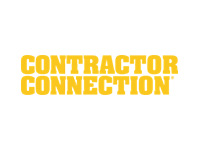Are you trying to figure out how to get rid of mold in basement areas? A basement can quickly build up a lot of fungus, leading you to avoid this dark and scary place altogether. And for good reason; excess mold leads to dangerous health issues.
However, you don’t have to hide from your basement forever. Why be afraid and let the mold grow when you could clear it away with some helpful DIY tactics?
Though your first option should be to call an expert, you can’t always get someone over immediately. A licensed technician will tell you where they see mold growth and how to handle it, but you can trust some home brew options in the meantime.
Whether you have mold spores, black mold, or unidentified fungus on your basement walls, these tactics will keep the growth at bay until a professional arrives. Follow these DIY steps to get rid of your mold!
Causes of Mold in a Basement
Basements foster mold for a specific reason; this is a dark place where fungus can bloom near in undisturbed conditions. You’re less likely to see an outbreak in a place with a lot of visibility, but mold can build quietly in your basement’s corners without you knowing it.
Mold spores grow in a specific set of conditions that allow it to thrive and multiply. No matter what is causing the growth in your area, it is motivated by these three essential factors:
- Water buildup
- Organic material like dead bugs or dirt
- Oxygen
When your cellar has a mold problem, it’s crucial that you identify the cause so that you can stop continuous growth. If you don’t monitor the situation, your basement could develop black mold.
Here are some common causes that you need to know about:
1. Too Much Moisture
One of the key ingredients for mold growth is water. Whether due to a leaky foundation or condensation, figure out why your basement is excessively moist. Look at the appliances and tools you have stored in the area for clues about the source of the fungus.
2. Leaks in the Pipes
Because of their functionality, lower floors usually have leaky pipes. Even homes with high-quality foundations sometimes have pipes break from years of wear and tear. Damage to the foundation is one common cause of mold growth.
3. Flash Floods
Floods in your area lead to water collecting in the soil against your foundation. Heavily amounts can lead to leaks and drowned basements.
4. Water Heater Failure
If your water heater is in the basement, the device might be the cause of your mold growth. Even the smallest leak can cause water to build up in your cellar. The standing water leads to fungus development.
5. Lack of ventilation
If there are no windows, vents, or ways for the air to circulate well in your cellar, condensation can build up.
If your property experiences any of these mold problems, it’s important to check for grime in the area. You may also experience breathing issues throughout the house, and that’s when you know to venture down to your basement to check for fungus.
Different Types of Basement Mold
Though mold growth on your concrete walls causes a variety of harmful symptoms no matter the strain, it’s important to know what kind of spores are developing in your home. An essential part of mold remediation is identification. If you know what the growth is, you can tailor the solution accordingly.
1. Alternaria
The bacteria are commonly found both outdoors and indoors. If your lower floor is dark or dimly lit, the strain could grow easily. Plus, if you have a sink or shower downstairs the fungus will congregate. You could experience asthma attacks or allergic reactions from the bacteria.
2. Aspergillus
The strain of spore grows mostly indoors. Most homes have had the fungus develop at some point. You could experience respiratory infections, allergic reactions, and lung inflammation.
3. Aureobasidium
If you have old wood in your home, you probably have had this mold growth appear in your home. The fungus grows with pink and black spots and you could easily develop an allergic reaction to it.
4. Stachybotrys Chartarum
The big and bad dreaded black mold. The black mold can be identified by a deep and musty smell and grows best in air ducts and pipes. When you notice black mold in your home, you should seek immediate help from a professional.
5. Trichoderma
An indoor strain found in damp surfaces such as carpeting, wallpaper, and other surfaces. If exposed to this fungus you could experience similar side effects as if you were exposed to black mold.
6. Ulocladium
Another indoor and outdoor bacterium that occurs after your basement has experienced serious flood damage. You could develop an allergic reaction or infection from this growth.
How to Get Rid of Basement Mold: A Step-by-Step Guide
Before diving into the steps necessary to get rid of the current mold in your place, you’ll need to ensure that you have all the supplies necessary. If you are dealing with black mold, your safety gear will be essential to doing any DIY work.
- Scrub brush
- Bleach solution
- Face mask
- Gloves
- Goggles
- Rag
- Sponge
- Dehumidifier or A/C unit
- Spray Bottle
- Water
- Dish Soap
- Primer
With your supplies in hand, you’re ready to tackle the spore issue that’s making it impossible to enjoy your lower floor. Though there are a variety of fungus strains that could be sitting in your basement, the steps are pretty much the same to combat the issue.
Here are the steps you need to know:
1. Remove All Furniture and Clutter
If you’re getting rid of the black mold or other strain of fungus in your basement, you’ll want to make sure that you can get to all the walls and floors. Plus, some of your pieces might be ruined by the mildew and need to be cleaned or thrown away.
2. Wash What You Can
While removing the furniture and things stored in the basement, keep an eye on which items have visible grime. If you see black mold, get rid of the item. Some pieces might have to be thrown away. Otherwise, put the dirty pieces in the laundry with a strong bleach-infused solution.
3. Dry Out the Damp Space
Fungus grows in places with a lot of moisture. Now is where your dehumidifier comes into the picture. The device will help to pull the excess liquid out of the air, making it harder for new spores to grow. If you can, open up the windows in the space and run the exhaust fan to help get a good air flow.
4. Spray the Area
Depending on how long the fungus has been in the space, you’ll want to get it a bit wet, ironically. Because the danger of the compounds come from airborne spores, a light spray of water will help keep the fungus from breaking into the air. Too much water could cause more grime to develop so don’t be liberal with your water.
5. Create the Solution
Mix one half parts water with one half parts bleach. Make sure to keep gloves and safety equipment on so as not to hurt yourself.
6. Scrub the Mold
With the bristled brush, rag, and sponge, get rid of the grime that you can see. Soak the tools in the bleach mixture and then get to work. When finished, get rid of the devices.
7. Contact a Professional
Though you’ve probably gotten rid of a huge part of the problem with the scrubbing, you’ll want to make sure there’s no underlying issues. You may also not feel comfortable that you got rid of all the problems by yourself. Have a plumbing or mold remediation team come to check the piping and devices, like water heaters and sump pumps, located in the basement.
What Can You Do to Prevent Mold in the Basement?
No one likes to have grime on their underground floor. Not only does it make the space uninviting to hang out in, but it’s also a pain to get rid of. To prevent mold growth, you can follow certain steps and keep your basement free of future spores.
1. Air Circulation
Mildew loves to grow in areas that don’t have good air circulation. During days when possible, open the windows and let an exhaust fan keep the air flowing through the cellar space.
2. Limiting Moisture
If possible, leave the dehumidifier in the basement. If you don’t have windows or easy ways to circulate the air in your basement space, the device will help.
3. Insulate Everything
Get in contact with a plumber who can insulate every pipe that has been leaking or damaged due to usage. Consider insulating the walls and any windows you have with a material that has a good quality moisture barrier.
4. Keep Water at a Minimum
Make sure that the water outside your basement drains away from the space. As for inside liquid, install a sump pump and keep an eye on any standing water.
5. Regular Cleaning
If mildew has grown due to a pile up of stored items in the underground floor, it’s time to consider adding the space to your weekly cleaning routine. Doing a check of the basement while you’re vacuuming, or mopping will help you keep your eyes on any potential fungus growth areas.
6. Schedule Regular Maintenance
Have a professional team come inspect the devices that are in your basement. If you have piping and a water heater in there, have a plumber come twice a year for regular inspections.
Even with following all the necessary steps, sometimes mildew in the basement happens. If you have gone through all the steps and still see and/or feel signs of fungus, it’s time to call a professional. Mold remediation becomes a lot simpler when you let the experts take over and set up some preventative measures before the spores appear.
Conclusion
Basement mold is not a fun thing to deal with, especially if it’s black mold. You and your loved ones could be exposed to dangerous spores that get into your lungs and make you sick. That’s why it’s so important to take prevention and remediation seriously.
This guide is designed to help you identify places to remove mold and help you prevent it in the future. Although these DIY solutions may seem cheaper and easier to handle, nothing beats leaving the mold removal to the professionals.
If you’re worried about mold spores growing in your basement, you shouldn’t wait to contact someone. Get in touch with our expert mold removal team at IDC Repair and Restoration. We can stop your mold growing and get your basement back to normal.
Contact us today for immediate mold remediation!













